This is the ultimate guide to building a digital marketing strategy for educational institutes.
Here, I’ll share 8 top promotional strategies to help you grow fashion Designing Institute, bakery Institute or any other educational institutes.
In fact, these are the same strategies that I used to:
- Acquire 5,000+ students for an online workshop
- Generated $21,5249 (INR 1.6 Cr) of revenue for a bakery institute
Without further ado, let’s jump right in.
Table of Contents
ToggleWhat is digital marketing?
Digital marketing refers to a type of marketing that utilizes online mediums for promoting a brand or its product to connect with the target audience. It includes email marketing, PPC, Social media marketing, SEO, etc.
In simple words: Remember the last time you saw an advertisement while watching YouTube videos or browsing Google, etc. That was the part of a digital marketing campaign of any specific brand.
Why should an educational institute invest in digital marketing?
Here are some of the reasons why you should consider investing in digital marketing.
Less expensive
A study performed by BlueWing agency found that, on average, the cost to reach 2,000 potential customers with search ads was 5-10 times less than traditional marketing channels (magazines, newspapers).
Narrow targeting
With digital marketing, you get the freedom of showing your ads to only those people who fit your buyer persona. This specific targeting helps you close more leads and sales and save your money as well.
Measure your spending
Most of the digital marketing channels give you detailed reports so you can track the money you spent. From knowing how many people have seen your ads to the number of leads generated, you get everything to measure and analyze.
How can I promote my educational institute with digital marketing?
There are many ways to promote an educational institute. From SEO to Google Ads, the opportunities are endless.
1. Understanding the AIDA principle
AIDA is one of the basic principles of marketing that also applies to promote educational institutes.
The AIDA model refers to different stages that a customer goes through before making the purchase. These stages are:
- Awareness
- Interest
- Desire
- Action

How to apply AIDA while promoting the institute?
Here are the action items for each stage of the AIDA marketing funnel.
Stage | Goal | Action items |
1. Awareness | To make prospects aware of your educational institute, courses, etc. | SEO, PR campaigns, display ads, etc. |
2. Interest | To build brand trust & generate interest in what you sell. | Video, search ad campaigns, social media posts, etc. |
3. Desire | To make your service/product desirable. | Creating content that shows the product benefits, Social media campaigns, influencer marketing, etc. |
4. Action | To encourage the buyer to make the purchase. | Retargeting campaign, video campaigns with testimonials, offering free demo classes, consultation, brand paid search, etc. |
5. Retention | To retain the existing customers and increase the customer-life-time value. | Upsell/ cross-sell other relevant products or services, Run exclusive offers to existing customers. |
Note: Often, retention is considered as the next step of the AIDA model.
2. SEO
SEO (search-engine-optimization) is a way of driving potential customers to your site or blog articles through organic search. It includes optimizing your website and articles to rank higher on the search engine.
Whether your institute offers online or offline classes, SEO can be a great way to drive high-quality traffic to your site.
Here are few elements to rock-solid your SEO strategy:
Focus on Local SEO:
In local SEO, citations play an important role. Important elements of citations are;
- Name
- Address
- Phone number
These citations help Google to understand the context of your business.
First, make sure that you’ve mentioned NAP within your site (from header/footer). Next, search for local directories in your region where your competitors have already listed their business.
Use the following search operator to get a list of third-party sites for citations in a specific region.
[“Your business name” -site: your domain + your region]

Also, discover quality traffic opportunities by creating service pages specific to locations.
Step 1. Type in Google with [(your institution type) in (your region)]
An example:
[(marketing institutes) in (Delhi)]
Step 2. Analyze the SERP. Chances are your competitors’ service pages, or even home pages, ranking on these kinds of queries. If you also find something similar, consider this as an opportunity.

This way, you can rank your service pages for high-intent keywords.
Additional tip: if you’re offering multiple courses or educational programs, never put all your offerings on one single service page. Do some basic keyword research and create a separate service page for each course/offering to rank on different keywords.
3. Optimizing Google My Business (GMB)
Google my business is a free tool provided by Google to help you promote your business on Google search and Google maps.
Here are some best practices to optimize your Google My Business account.
After verifying your GMB account, you need to add as much information as possible. Important information that you should provide are:
- Adding service name
- Opening hours
- Company logo
- Images of your educational institute
- Address
- Service areas
- Website
- Contact number, and more.

Not only will GMB help you get more business visits or clicks to websites, but it will also help to get better results with local SEO.
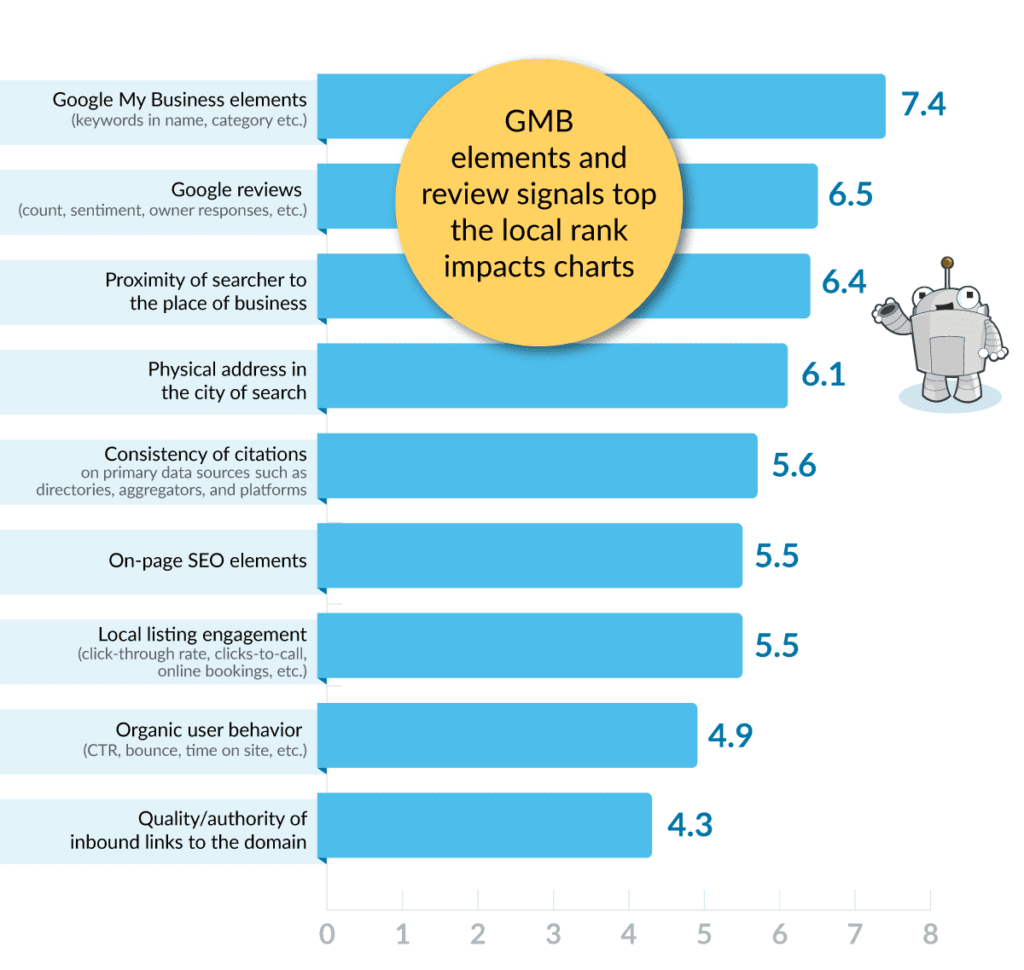
GMB is the most important ranking factor for local SEO, according to the survey of Moz.
Tip: Leverage GMB posts by publishing content about deals, updates and offers of your educational institute on your GMB profile. This enables you to earn more impressions and clicks too from Google search and maps.
Relevant article: Are Google local service ads worthy?
4. Publish educational content on YouTube
If you’re not planning for YouTube content strategy, you’re missing out on something good.
Study shows that 96% of people prefer watching explainer videos to learn about products and services.
Here are some of the key tips on building content strategy on YouTube.
Understand your audience
Here, demographic details such as age bracket, gender, location plays an important role in deciding the right video length.
For example, the younger generation is more likely to watch short-form content.

Find keywords
Yes, even on YouTube, keyword research is important. You don’t want to waste time creating videos that no one is searching for.
Use YouTube autosuggest to get popular search terms. First, type any generic keyword related to educational niche and then let YouTube suggest relevant topics.

Optimize headlines and description
Make sure you add your target keyword and in the description as well. Even better, use timestamps for videos to improve user experience.

Conduct live sessions and webinars (Will discuss Instagram, Facebook live sessions + running webinars)
5. Social media marketing
Social media marketing refers to promoting your brand, product, or services on social media platforms like Facebook, LinkedIn, Instagram, etc.
Before knowing whether to run an SMM campaign or not, you need to answer the following questions:
- Is my target audience using social platforms? If so, which one has the majority?
- Do I have enough budget and skillset to run and optimize ad campaigns?
And, when it comes to running paid ads on social media, you can try the following:
- Retargeting Ads: One of the most effective ways to generate leads for educational institutes is by setting up retargeting ads. That means your ads will show up to only those who have already interacted with your website or mobile app.
- Running ads with customer reviews: even with paid ads and organic posts on social media, content with social proof like testimonials, reviews work well. First, collect testimonials from existing customers and then use the same in your ad creatives and even on the copy.
Here’s a great example from CXl:
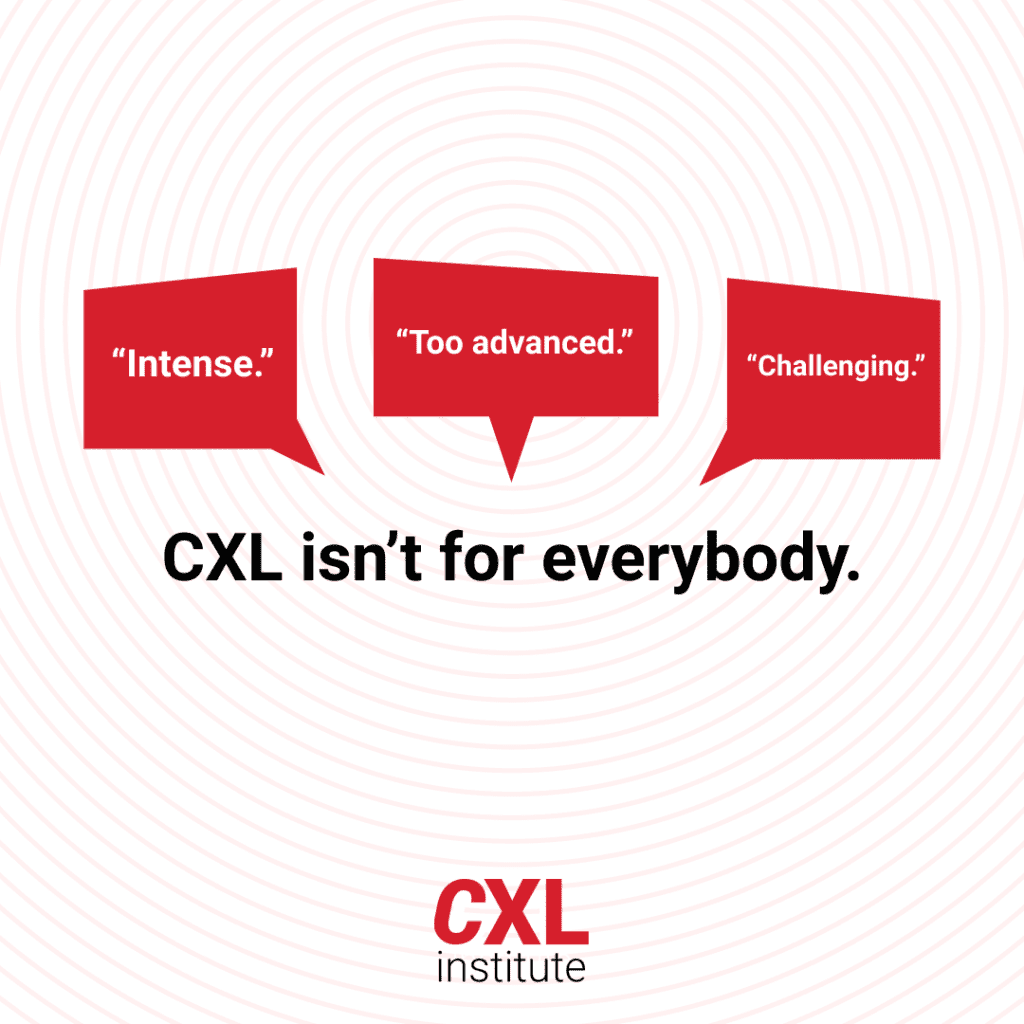
CXL Institute is positioning its educational courses as advanced yet difficult programs.
Not only with paid social media marketing, you should also get most out of the organic reach in different platforms.
For example, a cooking institute, called SWAD, promotes their cooking workshops, training programs, and many helpful recipes on Instagram.

The point here is to share content that is relevant and useful to your audience. If you’re selling bakery training programs, then you might leverage Instagram or Facebook to share free classes or tips regarding bakery.
But make sure you have a clear call-to-action to every social media post.
6. Google Ads
Promoting your educational institute offerings on Google will put your brand in front of a large and targeted audience base.

A study by Google shows that advertisers make $8 for every $1 spent on advertising.
When it comes to allocating your advertising budget, you need to consider diversifying your ad campaigns.
Here’s one of the budget-breakdown that we did for one of our clients:
Budget Allocation | Ad Campaign | Optimization Tips |
70 (%) | Search campaigns |
|
20 (%) | Display and video campaigns |
|
10 (%) | Remarketing campaigns |
|
The budget breakdown also depends on the client budget, resources and business goal. Therefore, We plan customized digital marketing strategy as per requirement, demand and we can shuffle budget according to that.
7. Optimize your website & landing page for conversions
Whether you’re using paid campaign or organic marketing to drive traffic, a poorly structured landing page can easily break your entire campaign.
Here are some of the best practices to optimize your website and landing pages for conversion:
Above-the-fold content
The above-the-fold content is the first thing your users will notice. Ensure that your messaging communicate:
- Who’s this for?
- What is the benefit for users?
Here’s an example by Udemy:
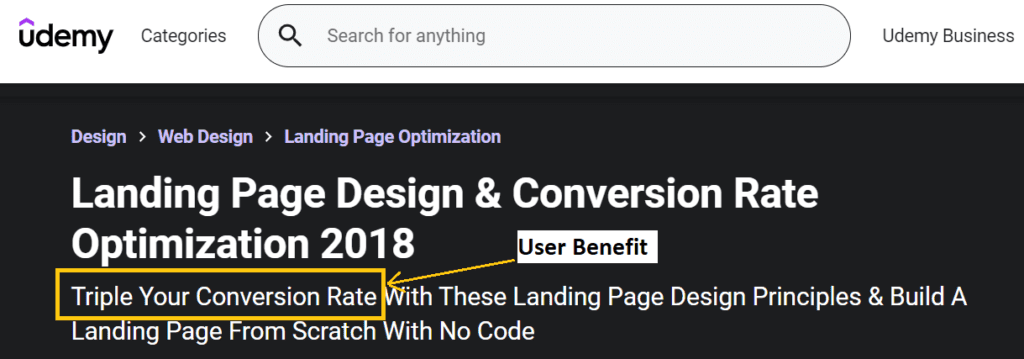
Another best practice is optimizing the above-the-fold content by adding a lead generation form.
But the goal here is to make the Sign Up relevant to the page and as easy as possible.
This is how Harvard institute is doing the same:
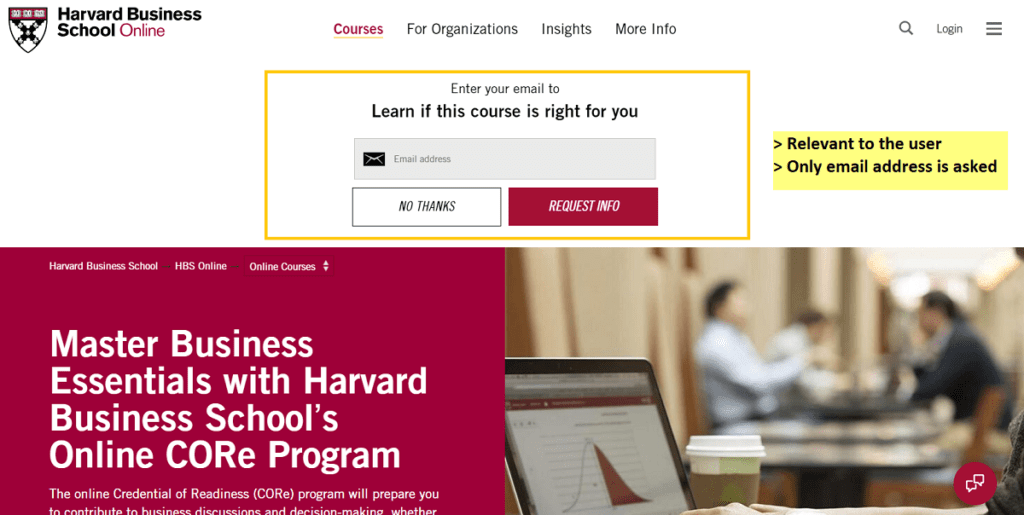
Social proof
When it comes to social proof, the following elements work well.
- Video testimonials from existing students
- Third-party reviews from sites like GMB, Trustpilot, even Twitter feeds.
- Quantified reviews
- Human images
- Features walkthrough video to help users visualize the course or learning program.
Below is a breakdown of Ahref’s landing page from where you can take a lot of inspirations:
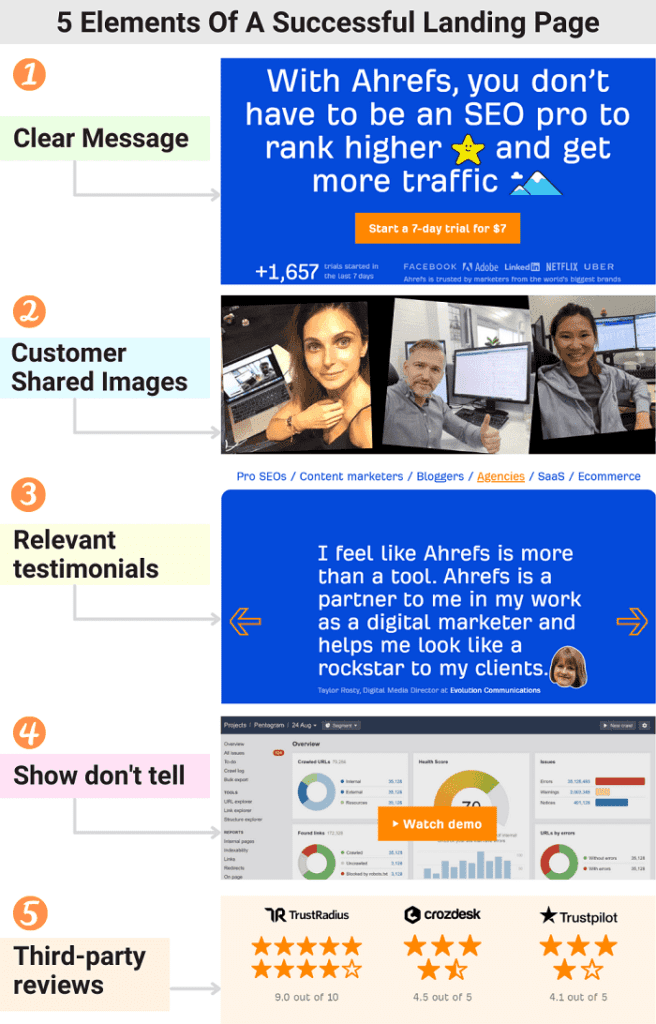
Pro tip: Add different contact points for the users. It improves the user experience and also adds an extra layer of trustability.
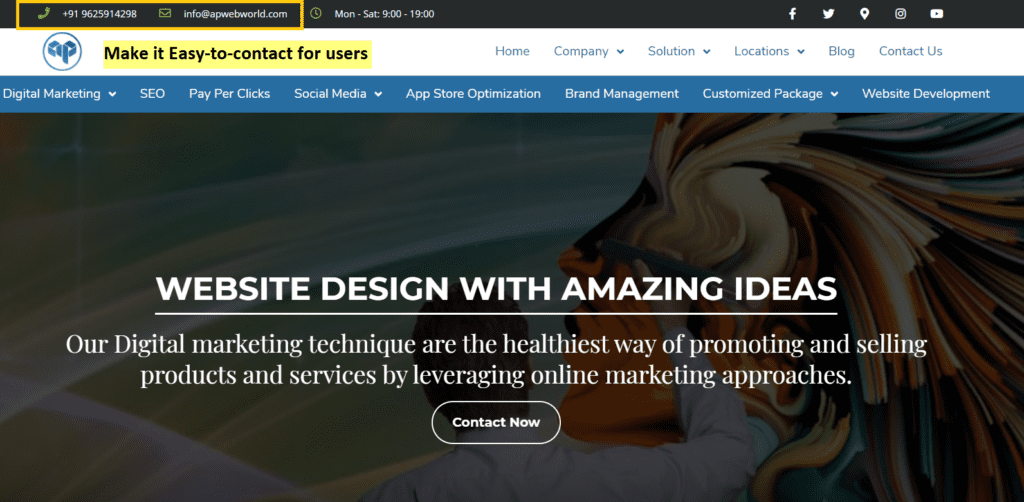
8. Live sessions and webinars
CMI study shows that 67% of B2B marketers prefer live sessions and webinars as a successful content format.

Live sessions or webinars are great for any educational institutes to generate leads, get admissions, and build an audience.
For live sessions, leverage social platforms like Facebook, LinkedIn, YouTube. This will help you create awareness and also get people into your funnel.
Based on our experience of delivering results for clients, we prefer having a full-fledged funnel strategy to host live sessions or webinars.
For example, the below illustration shows a basic webinar funnel that we used for a baker institute.

Also, regarding the email workflow for webinars, you need to have the following emails scheduled:
- Thank you email/registration confirmation: Sent to the user immediately after joining the webinar list.
- Introduction email: Give a brief introduction of what your company does. Also, if you plan a weekly newsletter, tell users about what to expect and how often.
- 24-hour ago reminder: Remind your user of the webinar before 24 hours. Also, add the link to join the event.
- 1-Hour to go reminder: Send a webinar reminder with a joining URL.
- Post webinar thank you: People who’ve joined the webinar, send them a thank you message. And share the URL to buy your service or product.
Webinar replay: users who didn’t join the event, allow them to watch the webinar replay.
9. Create a digital marketing plan for educational institutes
Any solid marketing plan starts with understanding the audience. Before running any paid campaign or organic marketing, you need to figure out the three elements:
A building buyer persona (will also list some tools for market research):
Buyer persona is a way of representing a detailed description of your target audience. For example, you’ll get to know their interest, demographic details (age, gender, location, etc.), psychographics details (interest, behaviour, need, pain points, etc.), and many more with a buyer persona.
Here are some tools to build a buyer persona:
- HubSpot (make my persona)– Buyer persona generator
- SparkToro– Know what your audience listens, reads, and watches, and follows
- LinkedIn and Facebook insights
- Google Analytics, etc.
Competitor research
Whether it is organic marketing or paid campaigns, competitor research will help you discover the trending strategies.
Here’s a step-by-step process to track competitor’s advertising strategy:
- First, enter your domain name in Semrush and get a list of paid competitors.

Second, go to the ‘Ad copies‘ section, where you’ll find the exact ad copies used by competitors. Look for the title, description. You can also deep dive into the exact keywords they are targeting and Ad rankings as well.
The third step is to go to the ‘keyword gaps‘ tab and type in your competitors’ domain. Also, select ‘paid search.’

Now, you’ll get a list of keywords that your competitors are using, but you’re not.
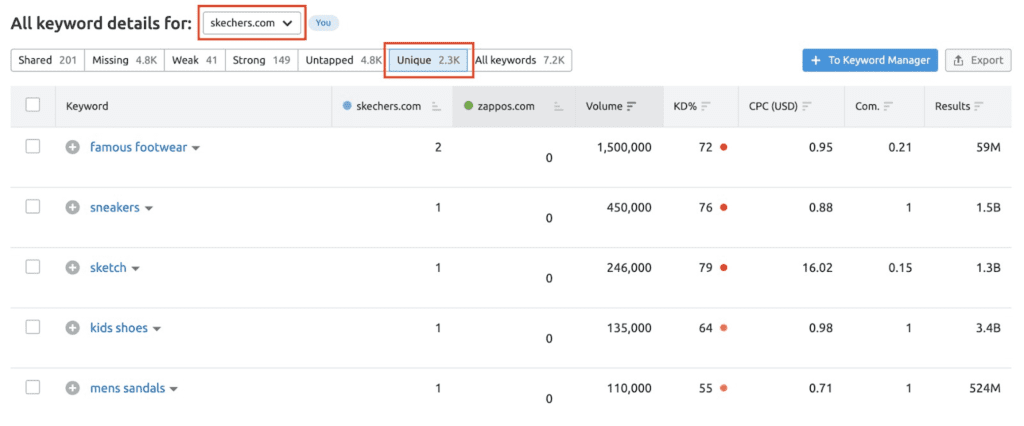
Relevant article: Best practices to analyse competitor’s strategy
Conclusion
I hope you’ve liked these 8 digital marketing strategies for educational institutes. The key here is to have a solid strategy and marketing experts to run and optimize your ad campaigns.
If you’re not sure where and how to get started, let our marketing experts help you with this.
Still, have any queries or want to add a few points?
Please comment below your thoughts.
